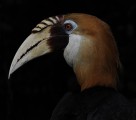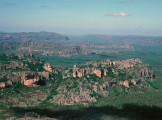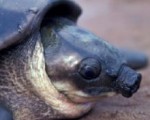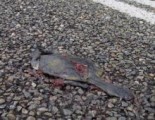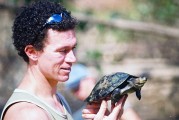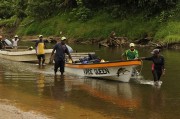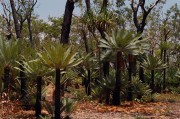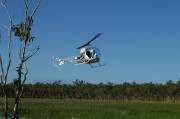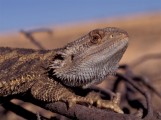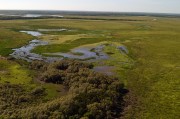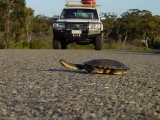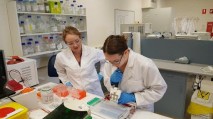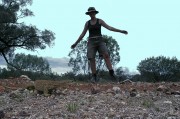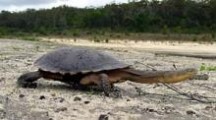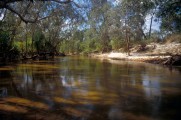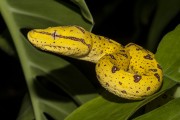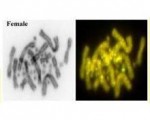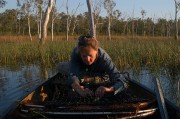
Congratulations to Mick Welsh on publishing his honours work. There have been few community studies of Australian freshwater turtles. The present study examined the diet and microhabitat use of 5 species of freshwater turtles from the Daly River, Northern Territory. Dietary shift with age was observed for most turtle species, and between species there was differentiation of diet and microhabitat use. The study also showed that in the dry-season, freshwater turtles in a perennial tropical river like the Daly River rely on aquatic vegetation and molluscs. Photograph: Megacephalic Emydura victoriae from the Daly River.
A macrocephalic northern redfaced turtle, Emydura victoriae,
from the Daly River, Northern Territory.
Mick reports data on resource partitioning of diet and microhabitat was examined for five sympatric species of freshwater turtles in the Daly River in the northern end of Northern Territory (Top End) in Australia. The Daly River supports a high diversity of freshwater turtles, making it the ideal place to study a freshwater turtle community.
Gut contents were collected by stomach flushing, and microhabitat use was determined by recording where each turtle was first seen before capture. Diet and microhabitat use were compared using an index of relative importance. Niche overlap was measured with Horn’s overlap index.
The pig-nosed turtle Carettochelys insculpta is an opportunistic omnivore that feeds mostly on ribbonweed (Vallisneria spiralis) and aquatic snails. The northern snapper Elseya dentata is herbivorous, feeding primarily on aquatic algae. The diets of C. insculpta and E. dentata overlapped moderately, but the overall niche overlap was low because they occupied different microhabitats within the river. The northern snake-necked turtle Chelodina oblonga (formerly rugosa) fed very little, and may use the Daly River as a dry-season refuge. The northern redfaced turtle Emydura victoriae is molluscivorous, consuming more molluscs as it grows. This ontogenetic dietary shift was associated with megacephaly (extreme broadly expanded head that is too large to fit into the carapace -- see accompanying photo) and expanded triturating surfaces. This specialisation allows adult E. victoriae to feed exclusively on molluscs and so their diet overlapped little with other species. The diamondhead turtle Emydura subglobosa worrelli was omnivorous, consuming mostly freshwater sponge and apparently preferring more lentic water.
The freshwater turtles of the wet–dry tropics are usually reported as being heavily reliant on the seeds, fruits and leaves of riparian vegetation; however, the present study showed that the dry-season diet in perennial rivers is primarily of aquatic origin.
The study suggested that populations of C. insculpta, E. dentata and E. victoriae could be threatened by broad-scale development in northern Australia if there were substantive impacts on aquatic macrophytes and molluscs in the Daly River system.
Read more by downloading the article from Wildlife Research.
